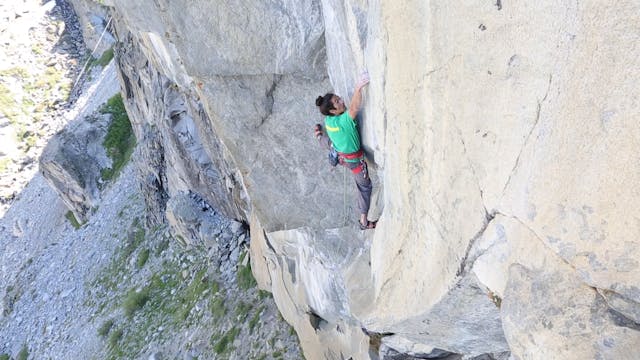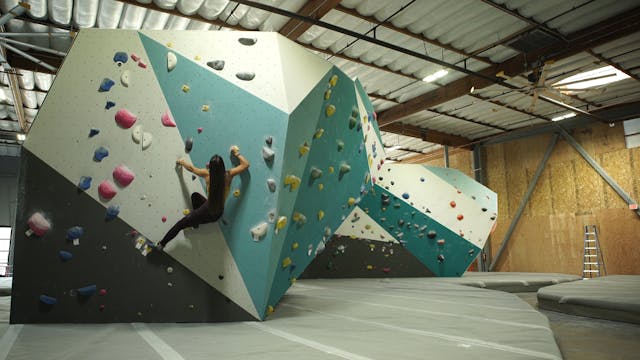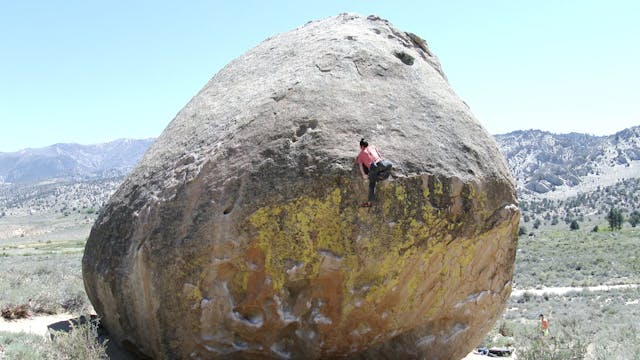Climbing Movement: 4. Open Hand vs. In-Cut Climbing Holds
Climbing Movement
•
1m 1s
Let’s review the difference between Open Hand hand holds, and In-Cut hand holds. Think of open hand and in-cut as two different families of holds.
Open Hand - When your hand becomes molded to the rock, without an in-cut feature that allows you to pull on (or away from) the wall. Climbing on open handed holds requires more overall body tension and awareness of balance. See our videos on “Open Hand Climbing” and “Body Tension” for tips on how to climb open hand slopers.
In-Cut - When your fingers can hook behind a lip of a feature, allowing you to pull perpendicular to the wall. In-cut holds require stronger fingers (i.e. tendons) than open hand features. In-cut holds range from large positive jugs, to tiny crimpers. Please see related videos.
Having strong fingers, and core body tension, are key points for improving your climbing. These skills are used in conjunction with proper climbing posture and positioning, as depicted throughout this video series.
We hope you found this video helpful. Feel free to comment below with questions or thoughts!
Please remember, climbing is inherently dangerous. Climb at your own risk.
Up Next in Climbing Movement
-
Climbing Movement: 5. Jugs
A “jug” is a term used to describe a large positive feature, typically a hand hold. The textbook jug is a full hand, or in-cut, or positive circle of a hold, and allows you to completely latch on so you can feel secure.
A foothold can also be “juggy”, meaning very positive and capable of ea...
-
Climbing Movement: 6. Crimping
A “crimp” is a term used to describe small edges or hand-holds, ranging from in-cut to sloping. The word “crimp” can define both the type of hold, and the grip position itself.
Crimps are edges, and are often positive. At times they are smooth, like sandstone. Others are sharp or rough, suc...
-
Climbing Movement: 7. Down Palm
A “down palm” can often be used on face climbs, on slab climbs, and on “mantles” for “mantling”.
You won't always have a “perfect edge” when climbing. However, a rounded or "sloping" feature can also be made positive for movement.
This is accomplished by pressing with your palm downwards, ...


